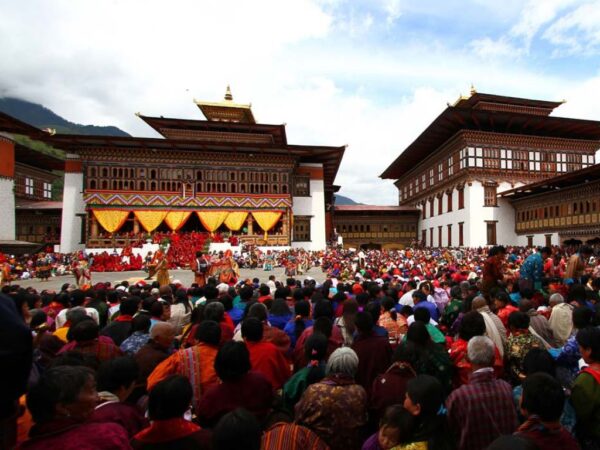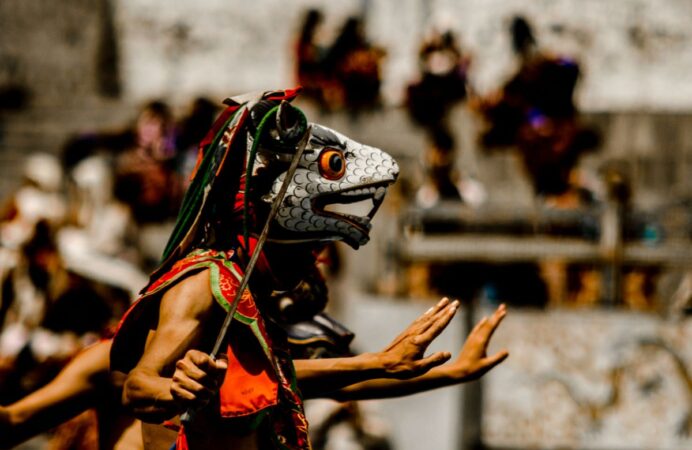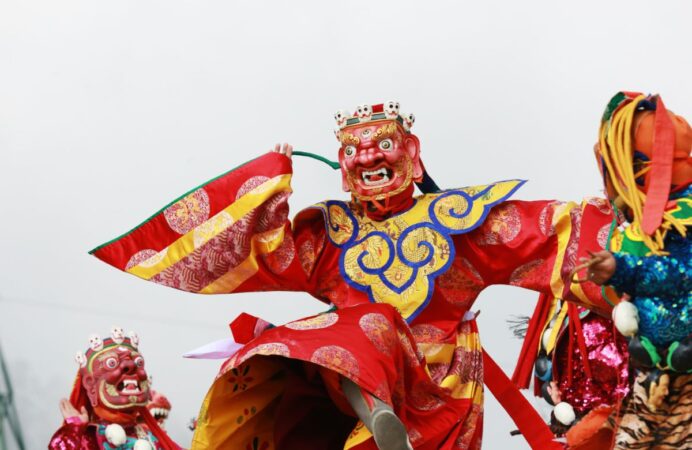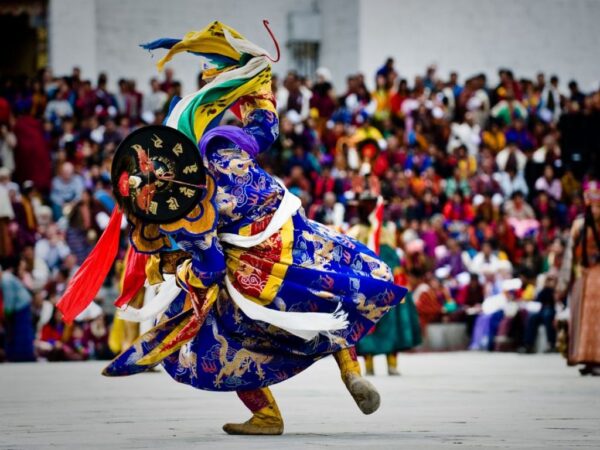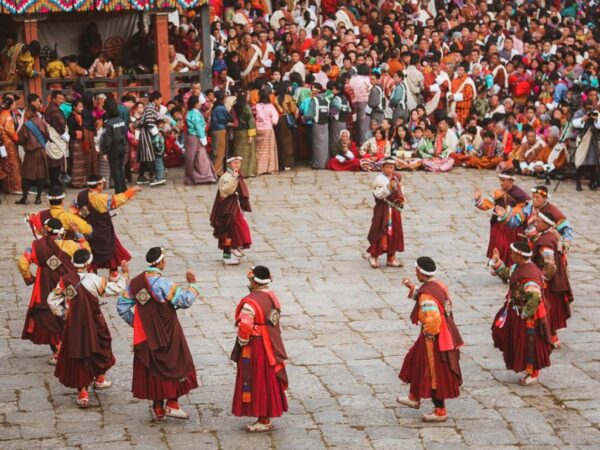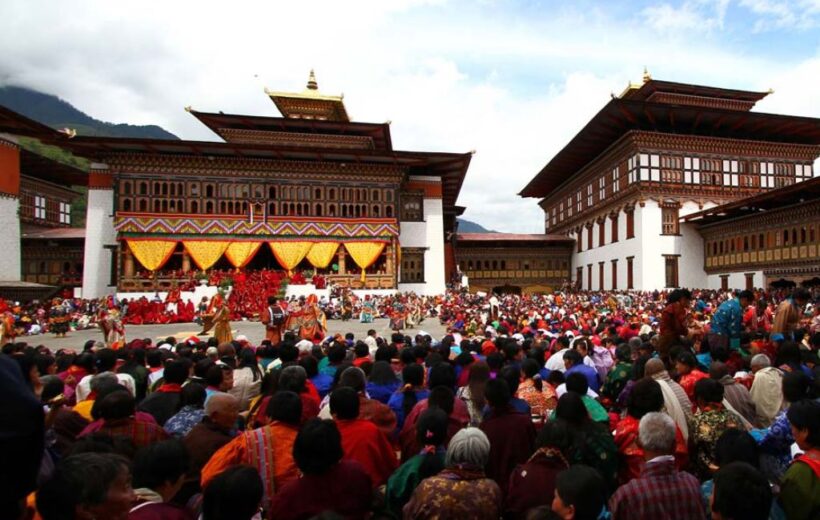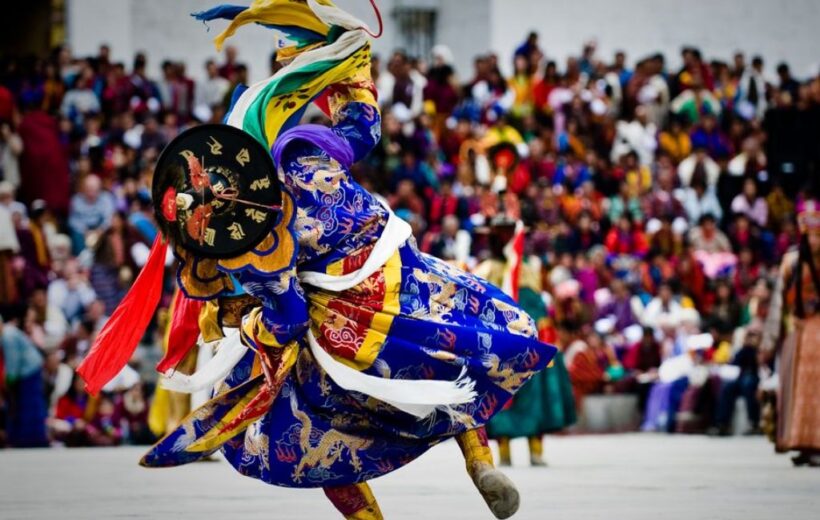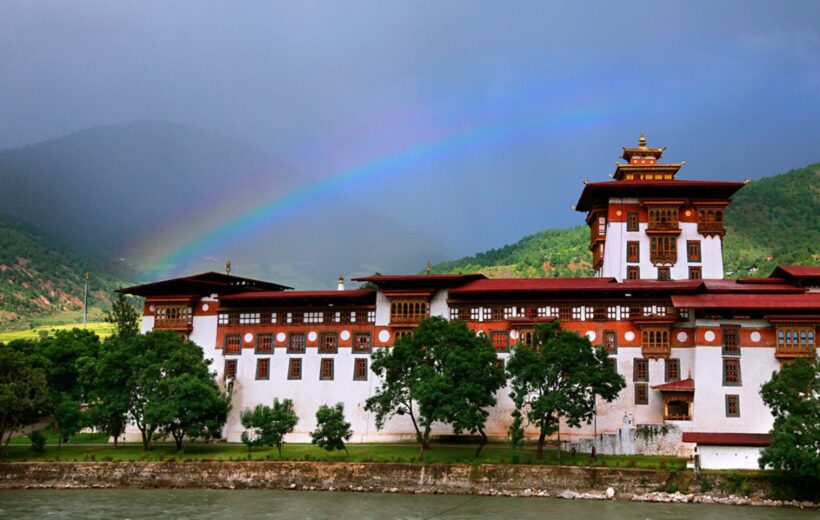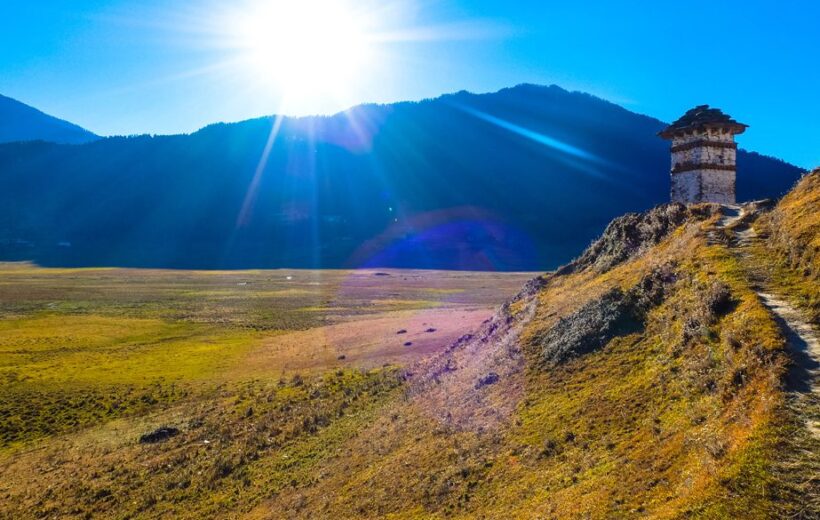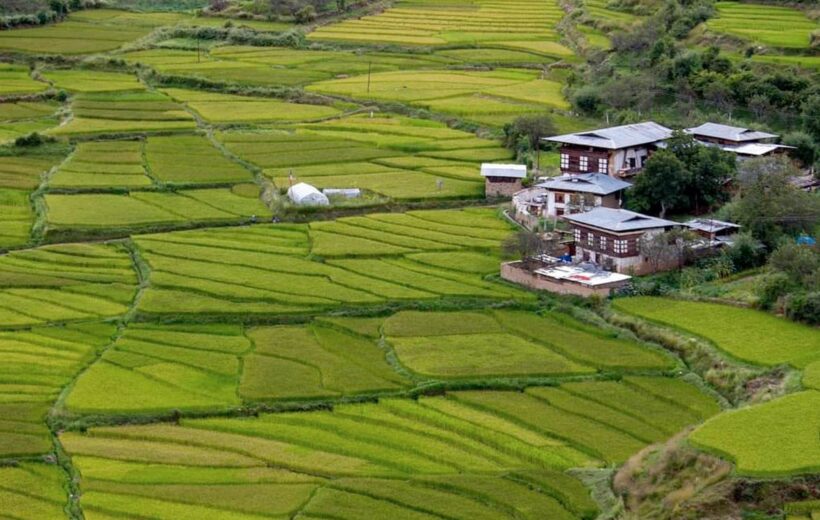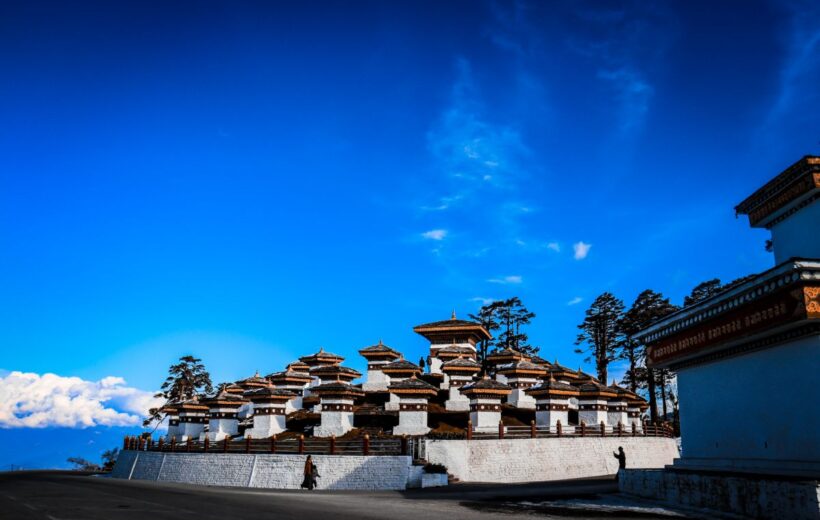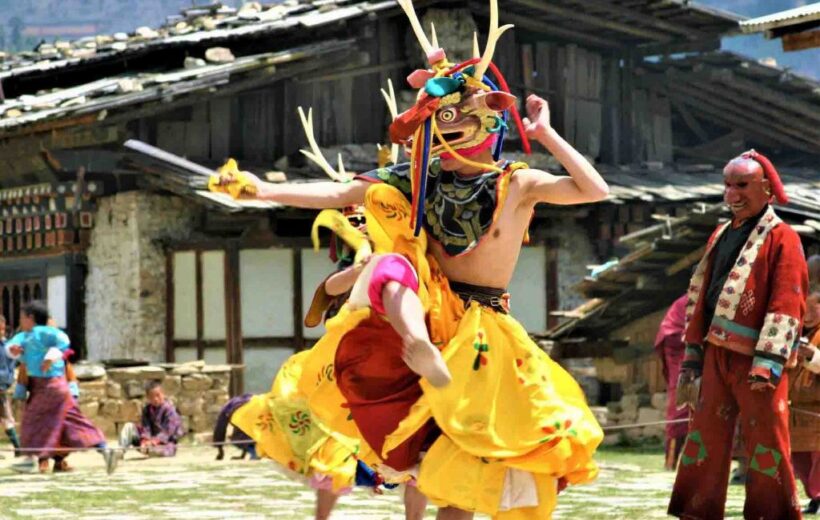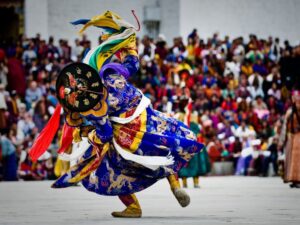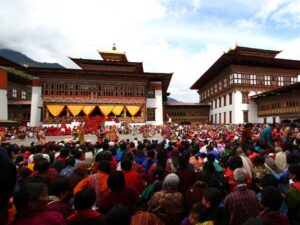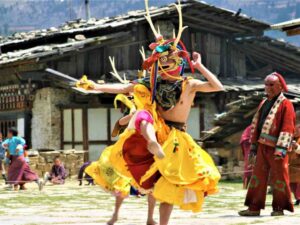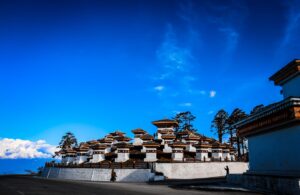Overview
This 8-day tour of Bhutan offers a comprehensive experience of the country's rich culture, history, and natural beauty. Starting with your arrival in Paro, the journey takes you through the capital city of Thimphu, the historic Punakha, and the serene Paro Valley. You'll explore iconic landmarks, engage with local culture, and hike to the famous Tiger’s Nest Monastery. The tour also includes a day excursion to the picturesque Haa Valley. Each day is filled with activities that offer a deep insight into Bhutan's unique traditions, landscapes, and warm hospitality.
Included/Excluded
- The Bhutan SDF
- All accommodations
- Meals and mineral water
- A licensed English-speaking guide
- A driver and vehicle
- Air fare
- A visa fee of US $40
- Alcohol
- Gifts/Souvenirs
- Travel insurance and personal bills
- Museums & Monument Fees
Tour Plan
Day 1: Arrival in Paro & Drive to Thimphu (54 km, 1-hour drive)
Upon landing at Paro International Airport via DrukAir or Bhutan Airlines, complete your immigration formalities before being greeted by our representative, who will accompany you throughout your tour. Begin your journey with a scenic drive to Thimphu. After checking into your hotel and refreshing yourself, visit Kuensel Phodrang to see the tallest Buddha statue and take in panoramic views of the Thimphu Valley. Explore the Craft Bazaar, where you can witness Bhutanese culture and purchase locally made art and craft products. The bazaar features 80 stalls showcasing traditional Bhutanese arts and crafts. End the day with a visit to the Takin Preserve, home to Bhutan’s national animal, the Takin, an unusual creature found only in Bhutan. Overnight stay in Thimphu.
Day 2: Thimphu Sightseeing
After breakfast, visit the Gagyel Lhundrup Weaving Centre, a cottage industry offering a variety of traditionally hand-woven Bhutanese textiles. Continue to the Institute for Zorig Chusum, also known as the Arts & Crafts School, where students learn the 13 traditional arts and crafts of Bhutan. Next, visit the Royal Textile Museum, which houses a vast collection of antique textile artifacts and promotes Bhutanese weaving culture. On weekends, experience the vibrant atmosphere of Thimphu’s Weekend Market, where locals gather to sell and buy goods. Don’t miss the opportunity to witness a game of archery, Bhutan's national sport, at one of the local ranges. Conclude your day with a visit to Tashichhoe Dzong, a historic fortress that serves as the government’s headquarters and houses the King’s throne room. Overnight in Thimphu.
Day 3: Thimphu to Punakha (71 km, 2 ½ hours)
After breakfast, embark on a drive to Punakha via Dochula Pass, which stands at 3,140 meters. On clear days, enjoy panoramic views of the Himalayan mountain range. Stop to explore the 108 chortens (stupas) built by Her Majesty Ashi Dorji Wangmo Wangchuck for the security and well-being of Bhutan’s King. Visit the Druk Wangyal Lhakhang, a monastery dedicated to Bhutan’s fourth king, Jigme Singye Wangchuck, and the armed forces. Continue to Punakha, which played a crucial role in Bhutan's history and served as the capital until 1907. En route, stop at Metsina village for lunch and visit Chhimi Lhakhang, the "Divine Madman’s Monastery," famous for its fertility blessings. In the afternoon, visit Punakha Dzong, a stunning fortress located at the confluence of the Pho Chhu and Mo Chhu rivers. In the evening, explore Rinchengang and Lobesa villages. Overnight in Punakha.
Day 4: Punakha Short Hike & Sightseeing
Start your day with a hike to Khamsum Yulley Namgyal Chorten, a magnificent stupa built to bring peace and harmony to the world. The chorten offers breathtaking views of the Mo Chhu River and the surrounding valleys. After lunch, visit Limbukha village, known for its peaceful atmosphere and red rice cultivation. Take a walk across the 200-meter-long suspension bridge and through the village, enjoying the scenic views and fresh mountain air. Legends say that the people of Limbukha were peace negotiators during medieval wars, a tradition reflected in their annual festival. Overnight in Punakha.
Day 5: Punakha to Paro (135 km, 4 hours) & Paro Festival
After breakfast, drive to Paro, stopping en route at Tamchog Lhakhang, where you'll cross an ancient iron chain suspension bridge built by the 13th-century saint Thangthong Gyalpo. Continue to Paro for a bird’s eye view of the Paro International Airport, known for its stunning location and challenging landings. After checking into your hotel, visit Paro Dzong, which may coincide with a local festival, offering a unique cultural experience. In the evening, explore Paro town and visit local handicraft stores. Overnight in Paro.
Day 6: Hike to Taktsang Monastery (Tiger’s Nest)
Begin your day with a hike to the iconic Taktsang Monastery, also known as Tiger’s Nest. The hike to the viewpoint takes about 1 to 1 ½ hours, offering spectacular views of the monastery perched on a cliffside. Enjoy a refreshment break at the View Point Cafeteria before continuing to the monastery itself. According to legend, Guru Rinpoche flew to this site on the back of a tigress and meditated here. The monastery, built in 1692, was damaged by fire in 1998 but has since been restored. After visiting the monastery, descend and have lunch at the View Point Cafeteria before returning to the base. In the afternoon, visit Drukgyel Dzong, a fortress built in 1649 to commemorate Bhutan’s victory over Tibetan invaders. The ruins of the dzong are well-preserved and offer insights into Bhutan’s history. End the day with a visit to a traditional Bhutanese farmhouse to experience rural life in Paro. Overnight in Paro.
Day 7: Excursion to Haa Valley
After breakfast, set out for a day trip to Haa Valley via Chele-la Pass, the highest motorable road in Bhutan at 4,200 meters. Enjoy stunning views of Mt. Chomolhari and Jichu Drakey from the pass. Descend into Haa Valley and visit Haa Dzong, followed by the famous Lhakhang Karpo (White Temple) and Lhakhang Nagpo (Black Temple). The temples hold significant cultural and religious importance, with connections to ancient Tibetan practices. In the evening, return to Paro. Overnight in Paro.
Day 8: Departure from Paro
After breakfast, drive to Paro Airport for your departure, bidding farewell to Bhutan with unforgettable memories.
Tour Map
Frequently Asked Questions
Bhutan is a year-round destination. There are four seasons: summer (June to August), autumn (September to November), winter (December to February) and spring (March to May). But because of the range of altitudes in the country, and the influence of the north Indian monsoons, the climate is incredibly varied.
In the south, the humid, subtropical climate is fairly consistent year-round, with temperatures between 15oC and 30oC. Central Bhutan, with its temperate forests, has a more seasonal climate, with warm summers and cool, dry winters. The northern regions are much colder during winter. Because of the high altitude, mountain peaks are snowy year-round and the lower reaches remain cool in summer.
In summer, the Indian monsoon season runs from late June or July to late September, mostly affecting the southern regions. Most farming activities take place in the summer, when crops thrive in verdant landscapes.
Autumn, from late September or early October to late November, follows the rainy season. It is characterised by bright, sunny days and some early snowfall at higher elevations. It’s the season of feasts and festivals as farmers reap the fruits of their work.
From late November until March, the crisp, clear and sunny winter sets in, with frost throughout much of the country and snowfall common above elevations of 3,000 metres. The winter northeast monsoon brings gale-force winds at the highest altitudes through high mountain passes, giving Bhutan the name Drukyul, which means Land of the Thunder Dragon in Dzongkha (Bhutan’s national language).
Bhutan’s generally dry spring starts in early March and lasts until mid-April. It is a botanist’s delight, with nature in full bloom. Summer weather commences in mid-April with occasional showers and continues to late June.
Visitors of all nationalities, except those from India, require a visa before entering Bhutan. For all visitors, except those from Bangladesh and the Maldives, this visa must be applied for and approved in advance of travel. Visitors from Bangladesh and the Maldives also require a visa, but this can be applied for and approved either in advance of travel or upon arrival in Bhutan.
Visitors from India are able to apply for a permit but are required to hold an Indian passport or an Indian voter ID card. For Indian nationals under the age of 18, a passport or a birth certificate can be used to enter and they must be accompanied by a legal guardian.
Nationals from Switzerland and Thailand holding diplomatic or government-official passports are eligible for a visa at their port of entry.
A correctly input visa application can take up to five days to process.
There is a one-off fee of US$40 for the processing of your application. This is payable at the same time as your Sustainable Development Fee (SDF), as part of the process of submitting your visa application.
All treks must be undertaken with an accredited tour operator or guide. Your tour operator will assist you with all the necessary logistics and safety precautions.
Please contact our hosts for the Department of Tourism’s list of approved tourism services.
The Sustainable Development Fee (SDF) is a daily levy paid by visitors to support Bhutan’s development. Since the kingdom first opened its doors in 1974, guests have played a critical role in our country’s growth.
The SDF is collected by the national exchequer and funds are allocated to various projects that create long-term, sustainable opportunities for the Bhutanese people, through free healthcare, education and training, upskilling the tourism and hospitality industry, improved infrastructure, environmental preservation and conservation, cultural preservation programmes and initiatives that support local businesses and economies. The SDF is also a vital means of maintaining the exceptional forest cover and carbon-neutrality for which our small nation is world-renowned and globally critical. The SDF also helps us to ensure that we can continue to offer guests tranquillity and an intimate experience.
The SDF is USD 100 per night for adults from all countries except for India. Children aged between 6 years and who have not yet turned 12 are eligible to pay USD 50 per night. Children who have not yet turned 6 years old do not have to pay any SDF.
The SDF for Indian nationals (showing a valid Indian passport or Voter ID card) is Nu. 1,200 (or the equivalent amount in Indian rupees) per person, per night. Children aged between 6 years and who have not yet turned 12 are eligible to pay Nu./INR 600 per night. Children who have not yet turned 6 years old do not have to pay any SDF.
SIM cards can be purchased from the Paro International Airport’s visitor information centre on arrival, or from branch offices of Bhutan Telecom and TashiCell, or from authorised agents in towns.
There are no rules about what visitors should wear. However if you are planning to visit places of religious significance, respectful smart-casual clothing that covers your body from shoulders to knees is appropriate and appreciated.
Yes, permits are required to enter National Parks in Bhutan. However the process can be done online and the permit should be issued quickly. Please visit this link for more information: https://docs.google.com/forms/d/e/1FAIpQLScM4k5SPaGI_GnV6NJuQHstpS5ai9G4wOlpLSq0fsy73EZK7A/viewform
While most monuments in Bhutan are free, some are chargeable. For the full list of monument fees, please click here for more information. Children below 18 years will have a 50% concession and children aged five years and below will be exempted. Most monuments are open from 9am – 5pm each day. In June 2023 it was announced that foreign visitors can now visit monuments whenever they are open to the general public, without any restrictions.

